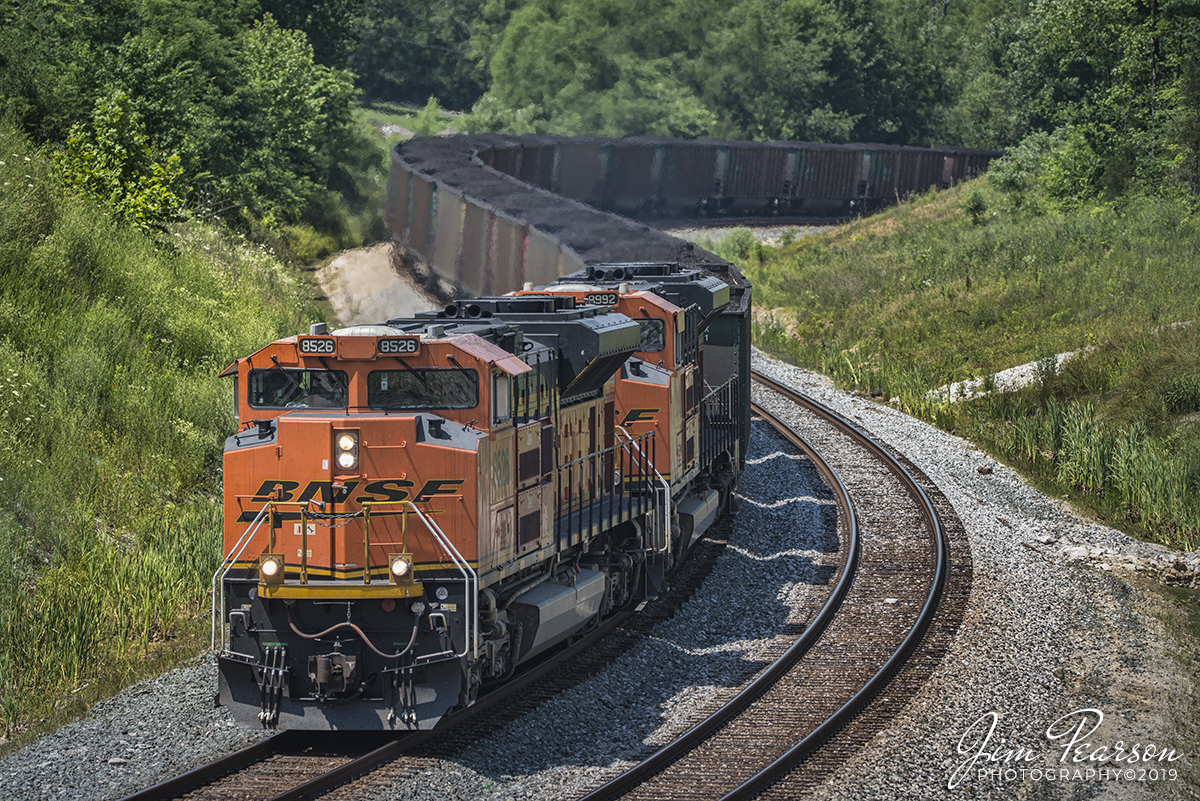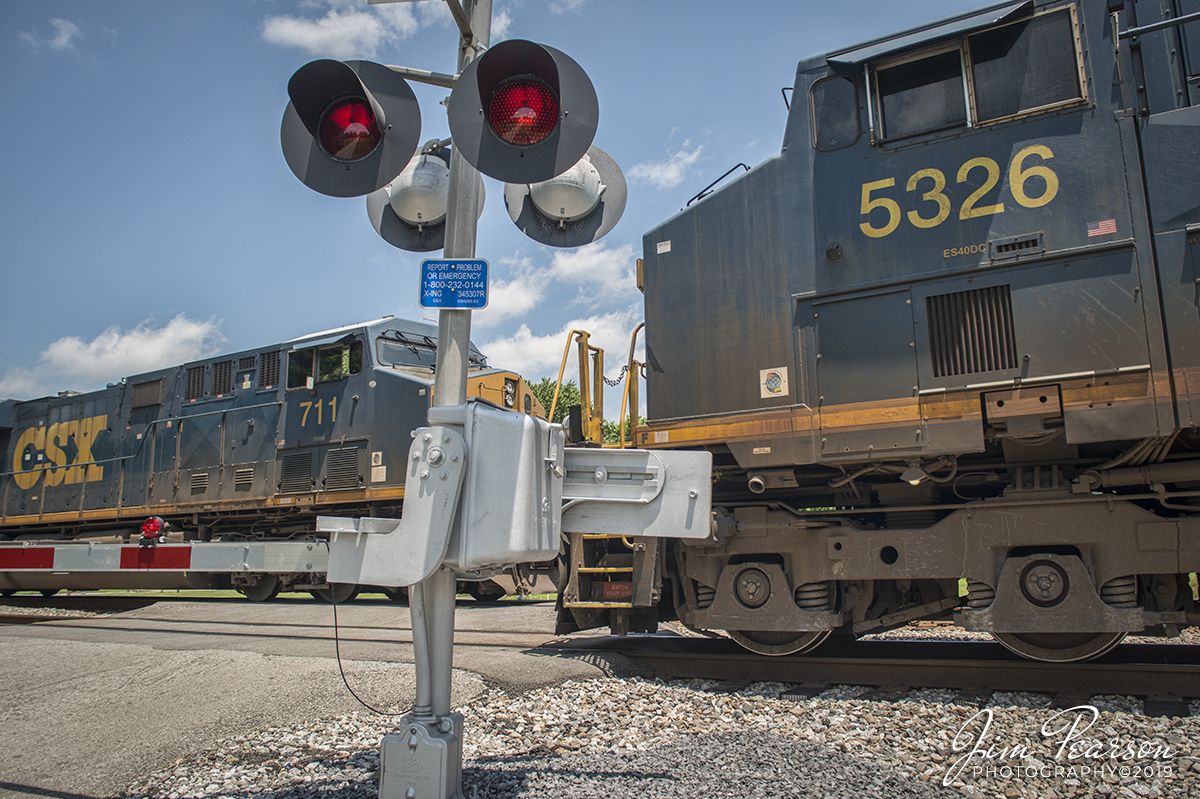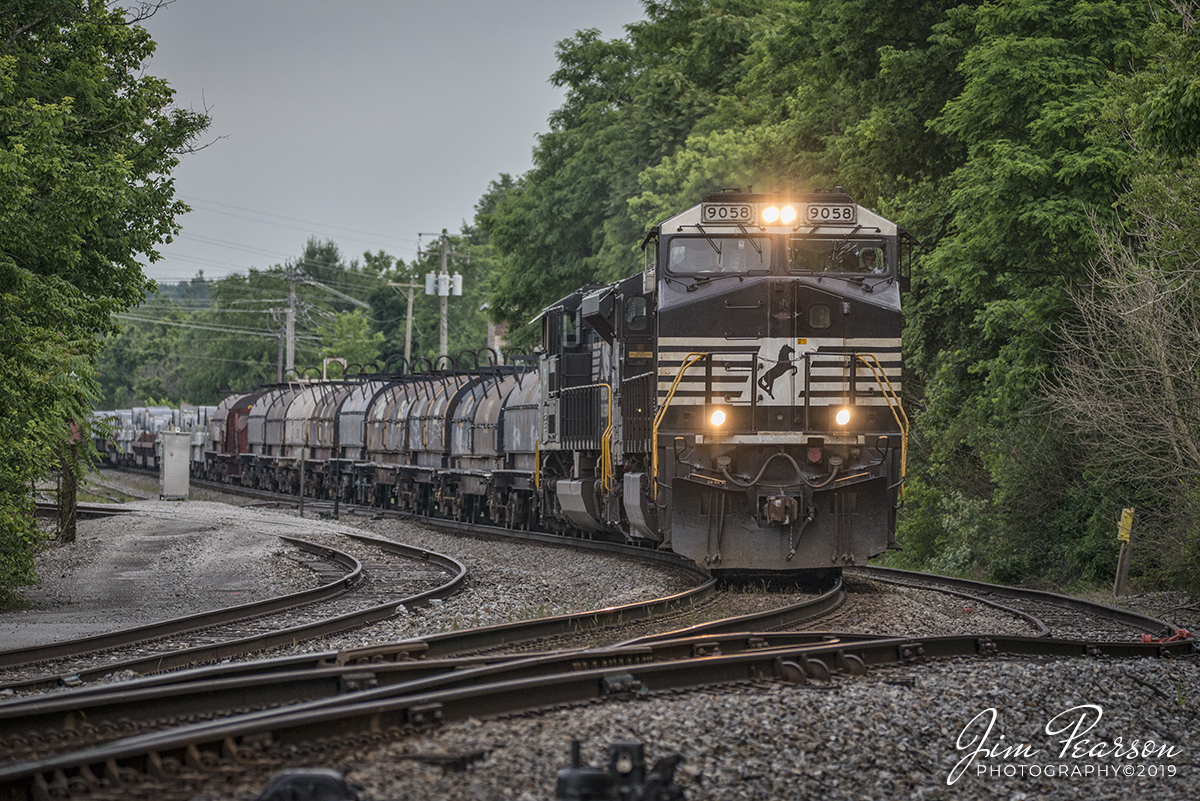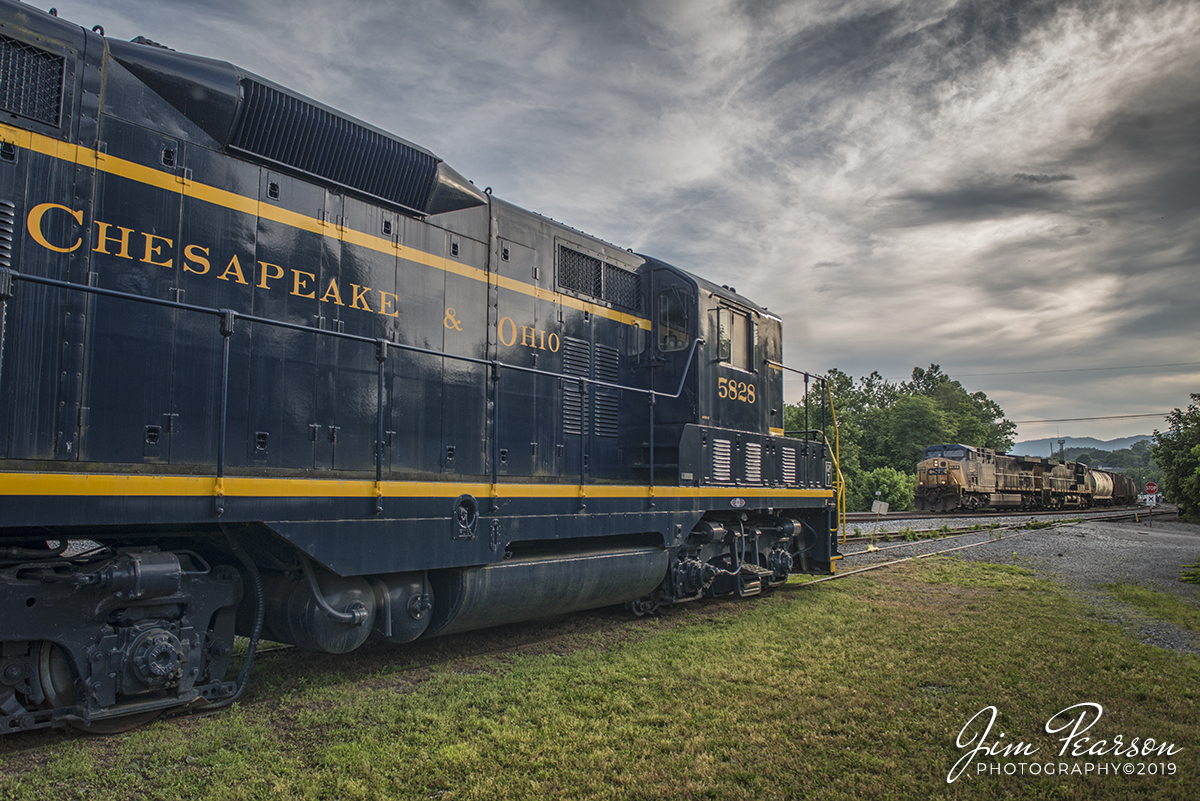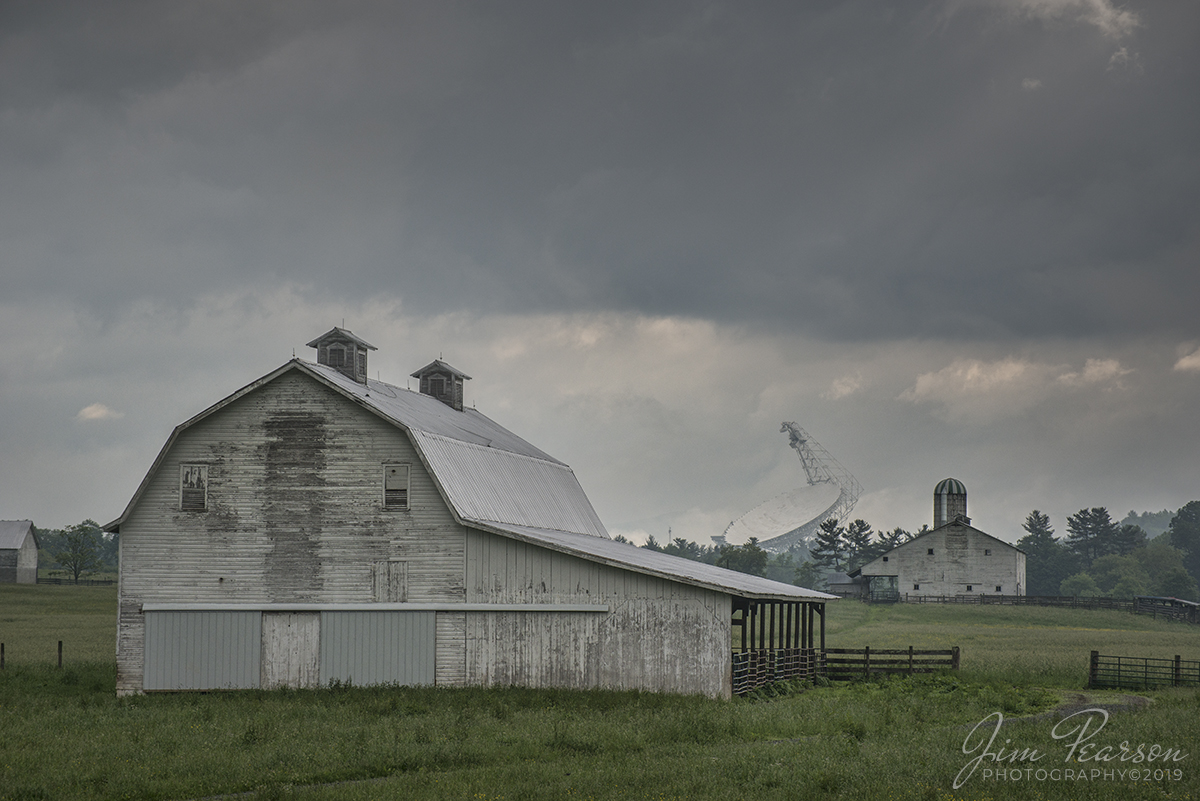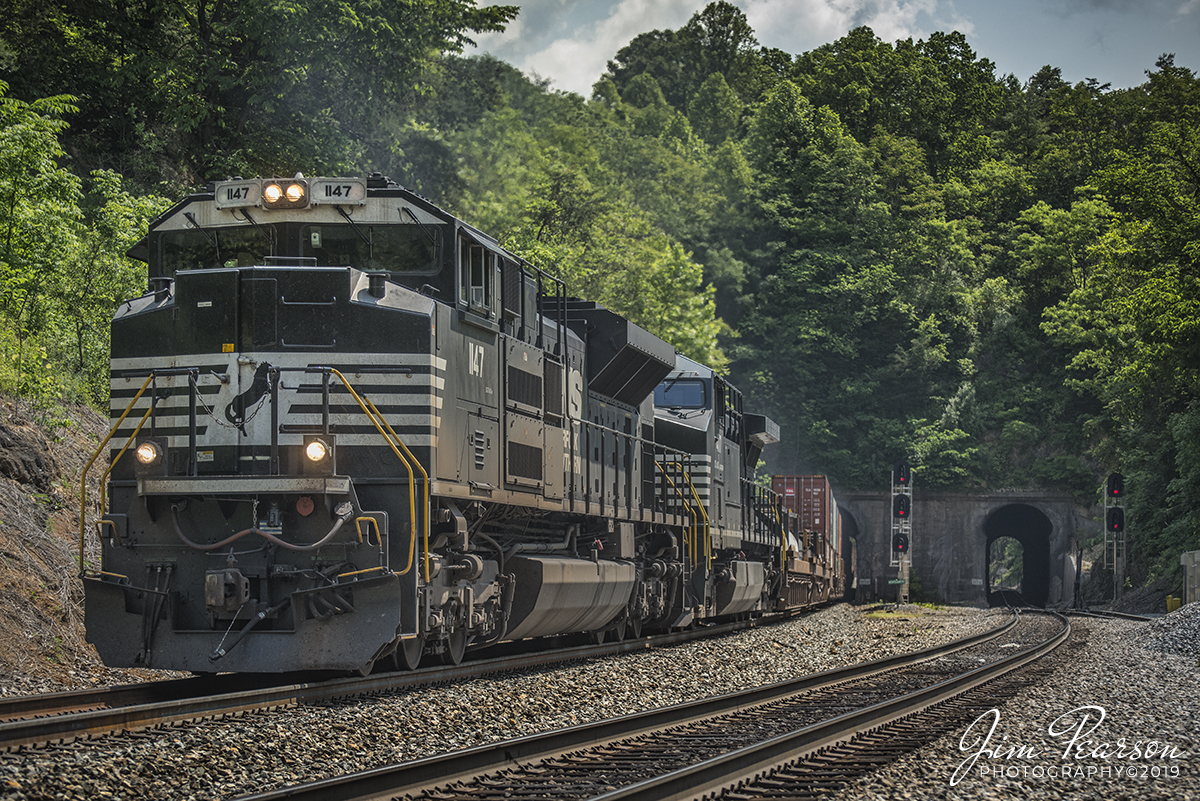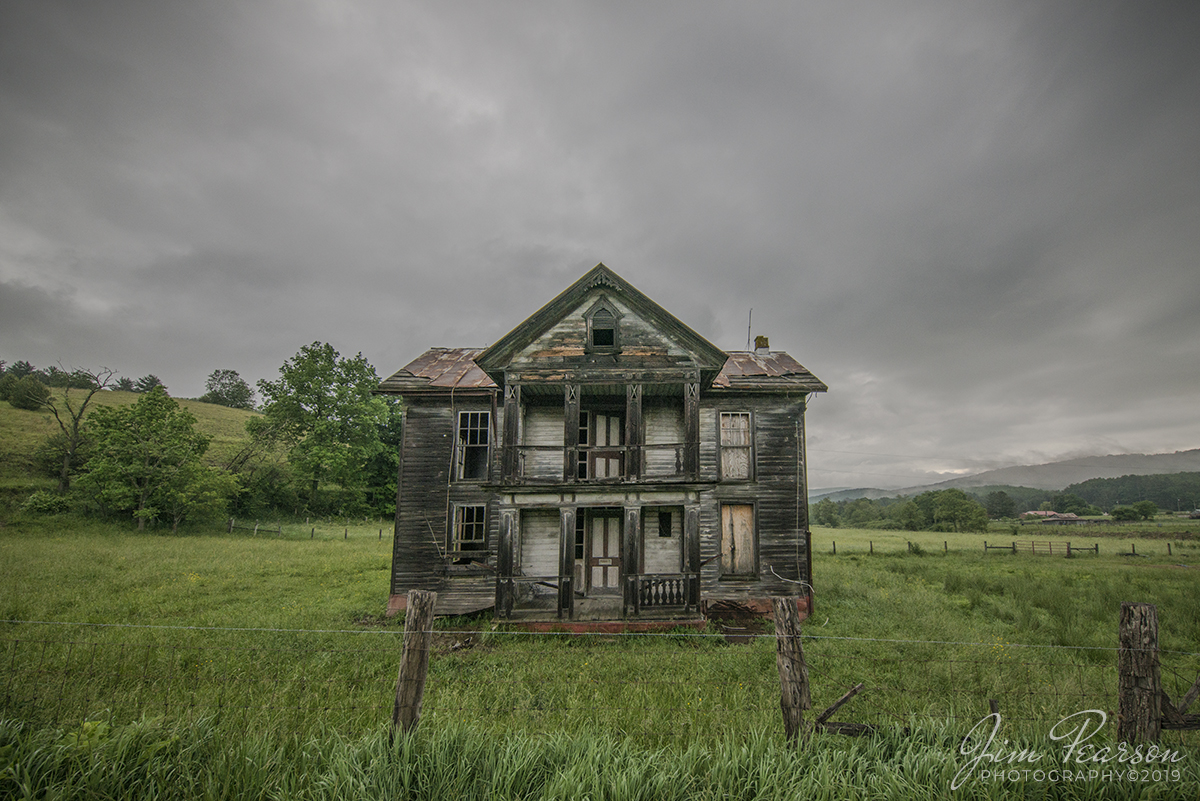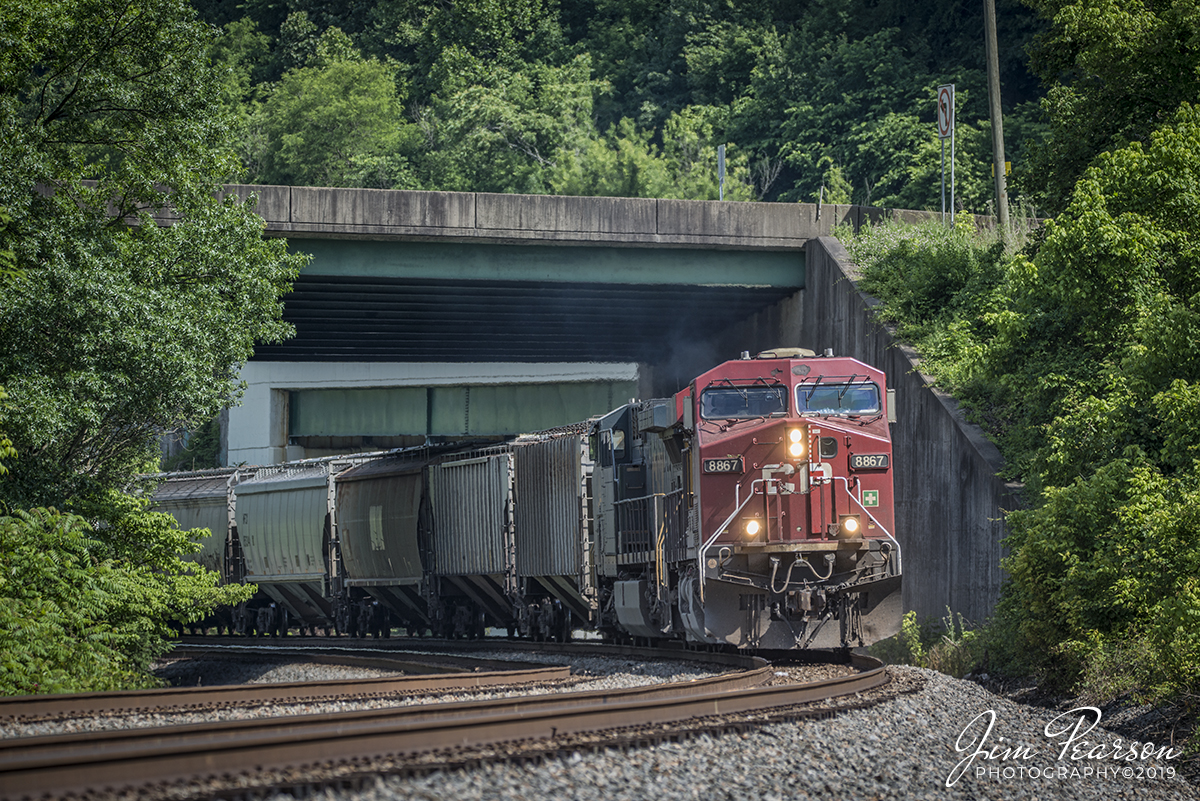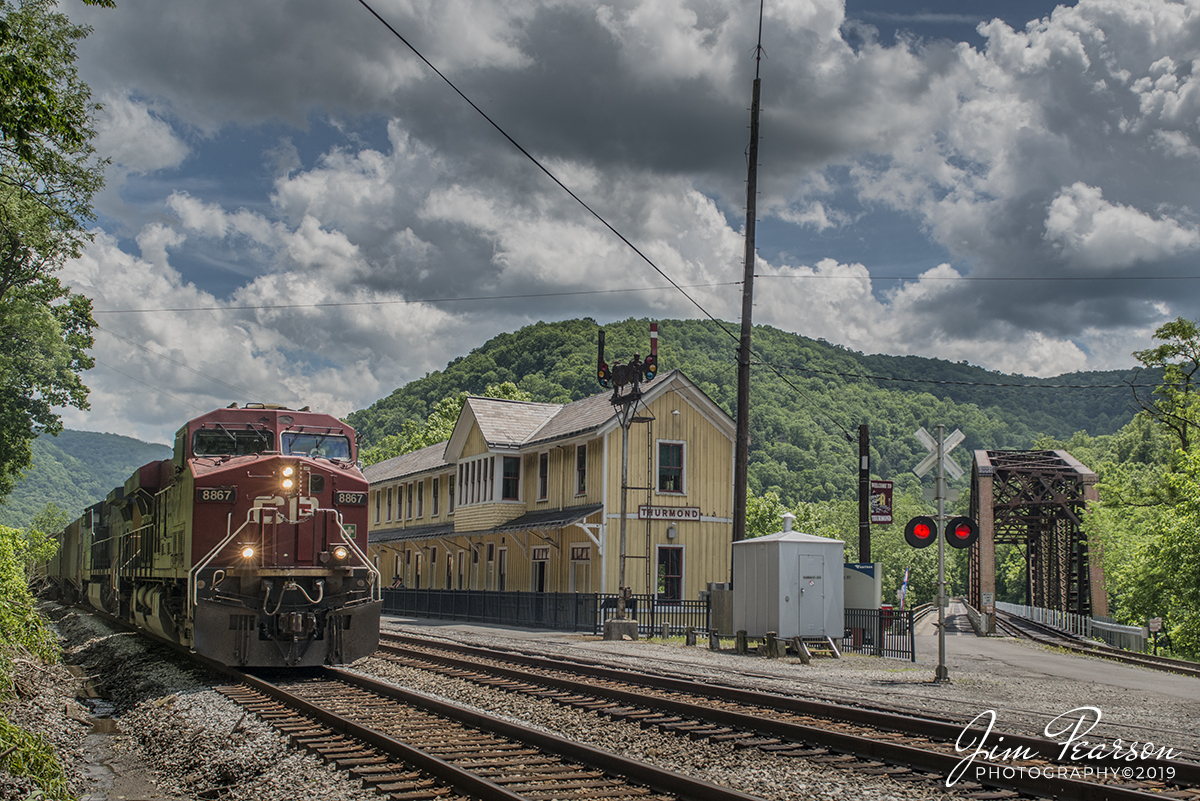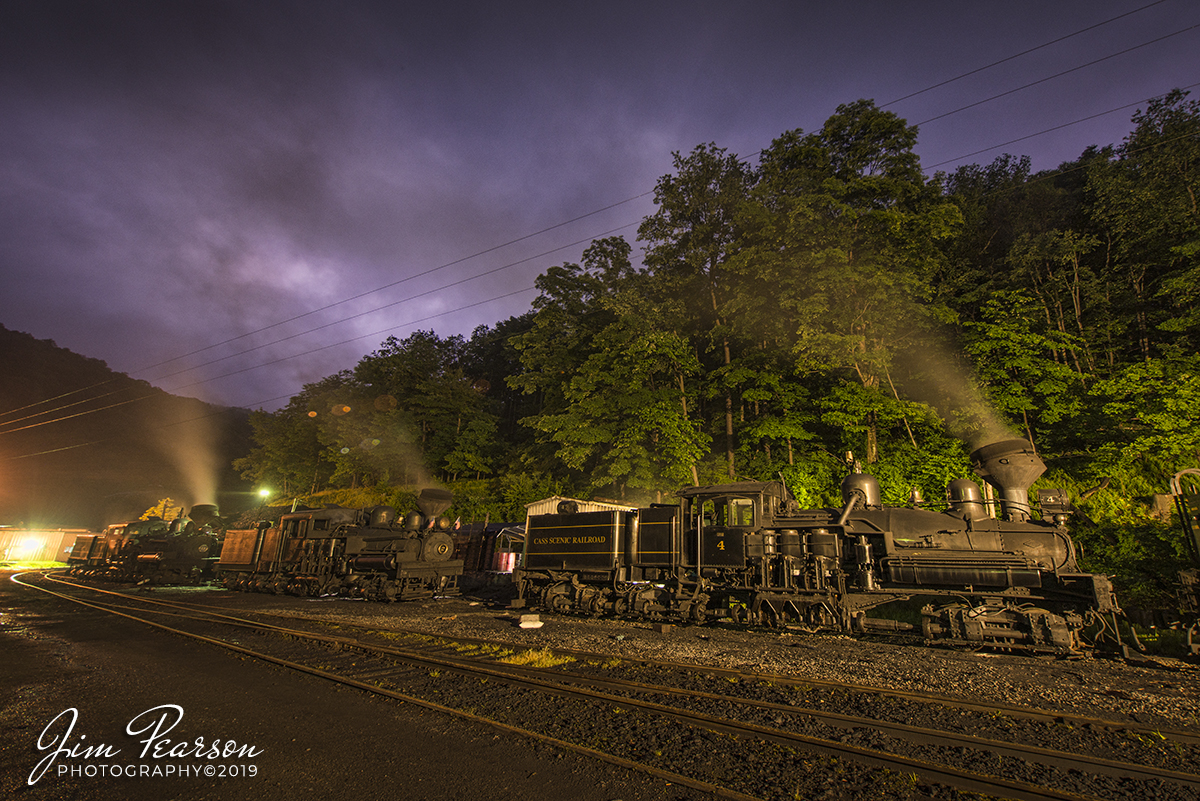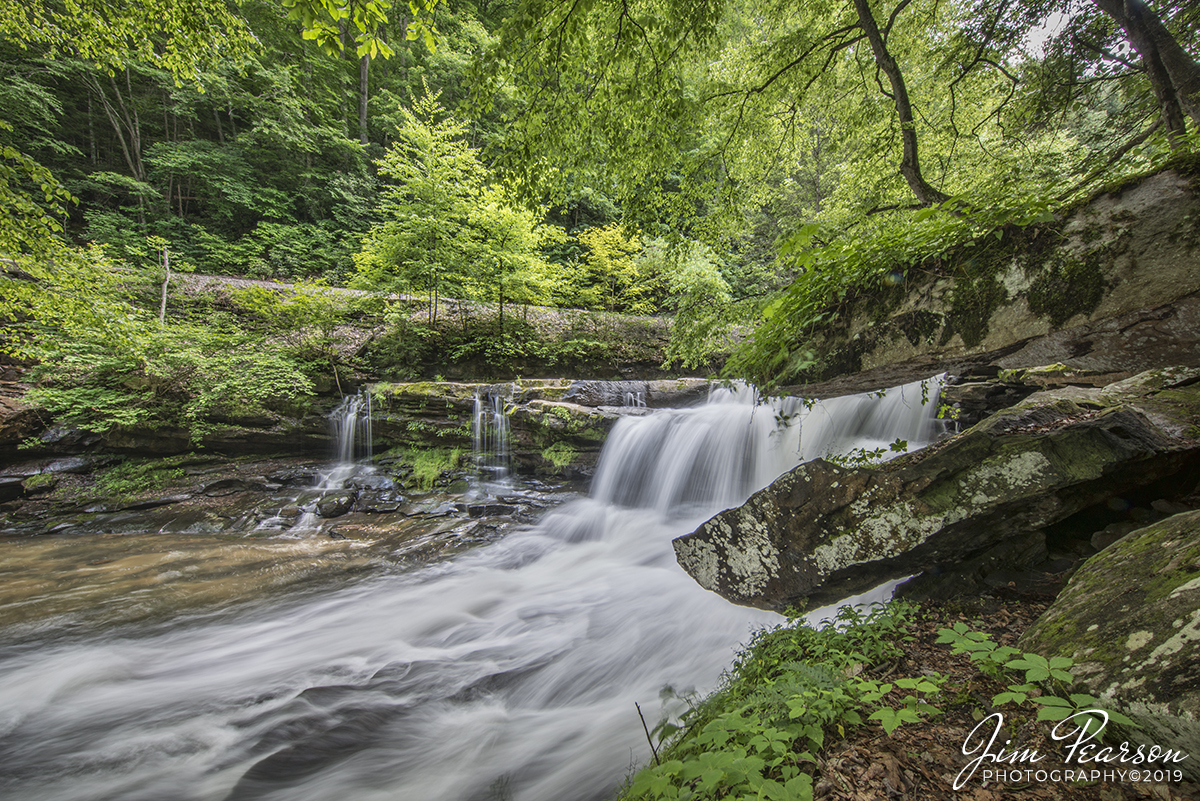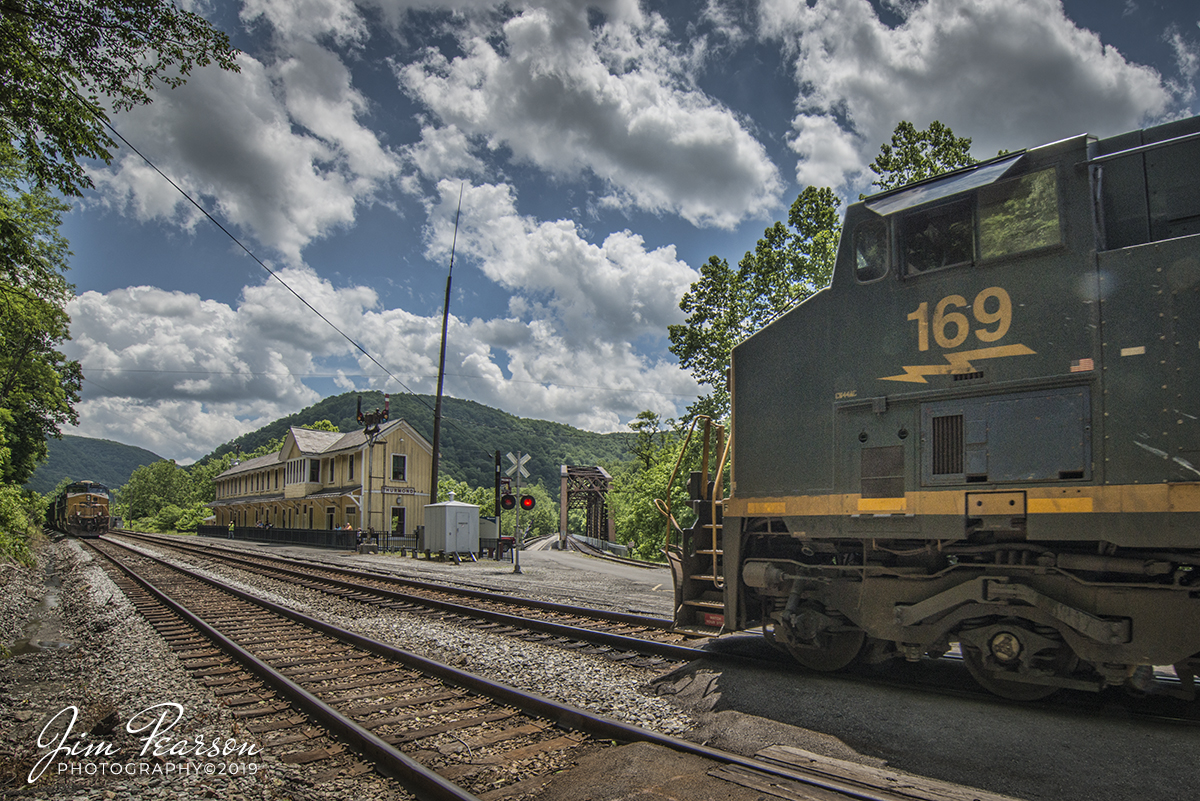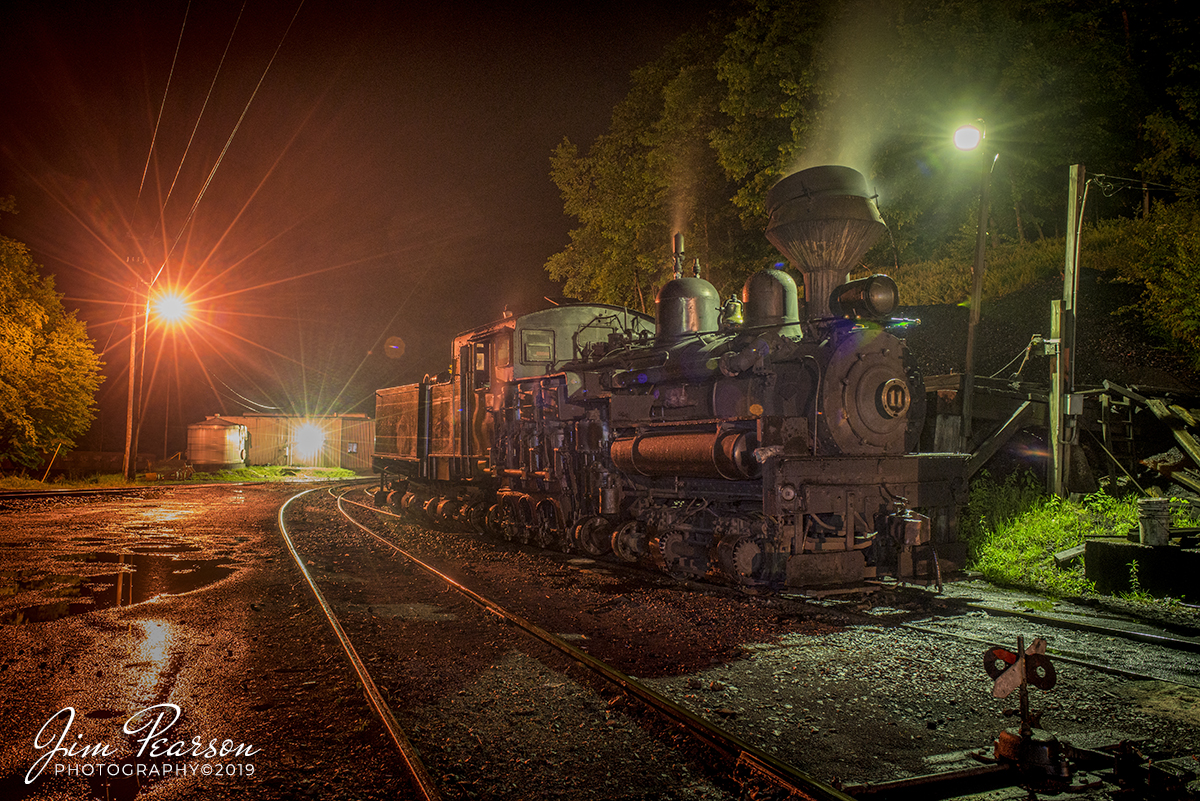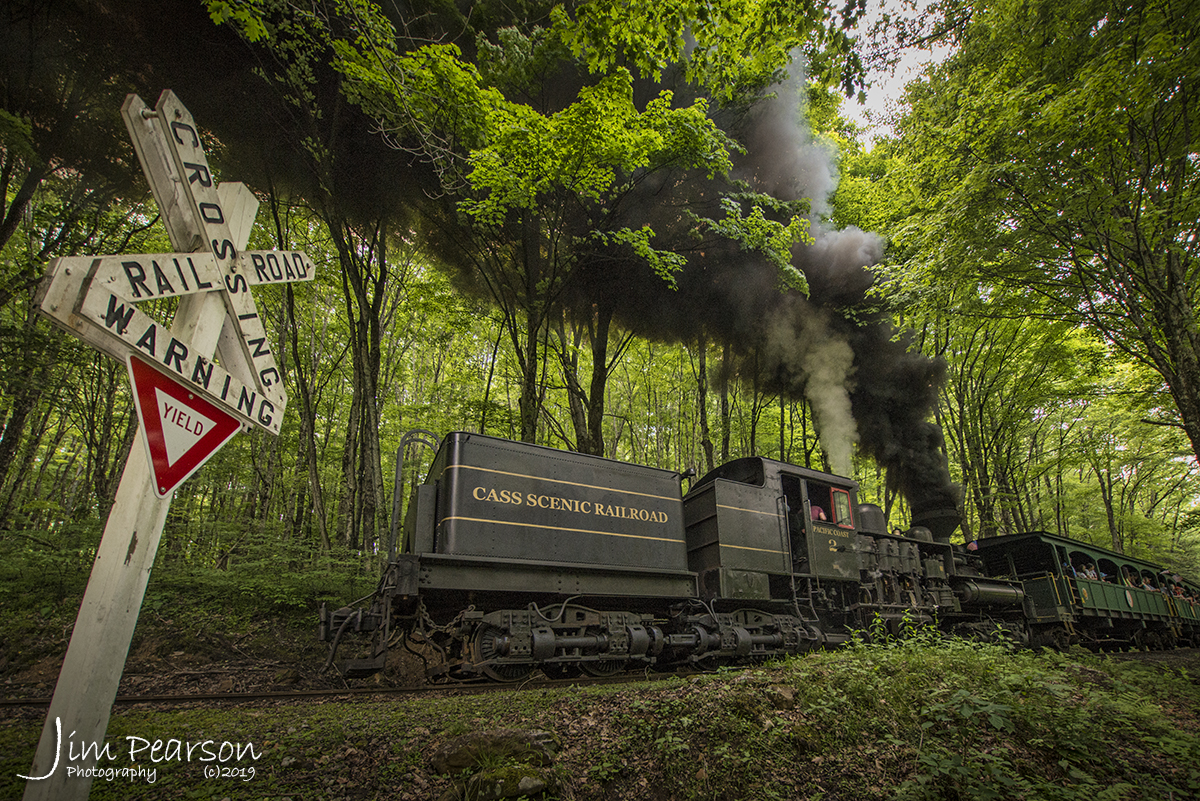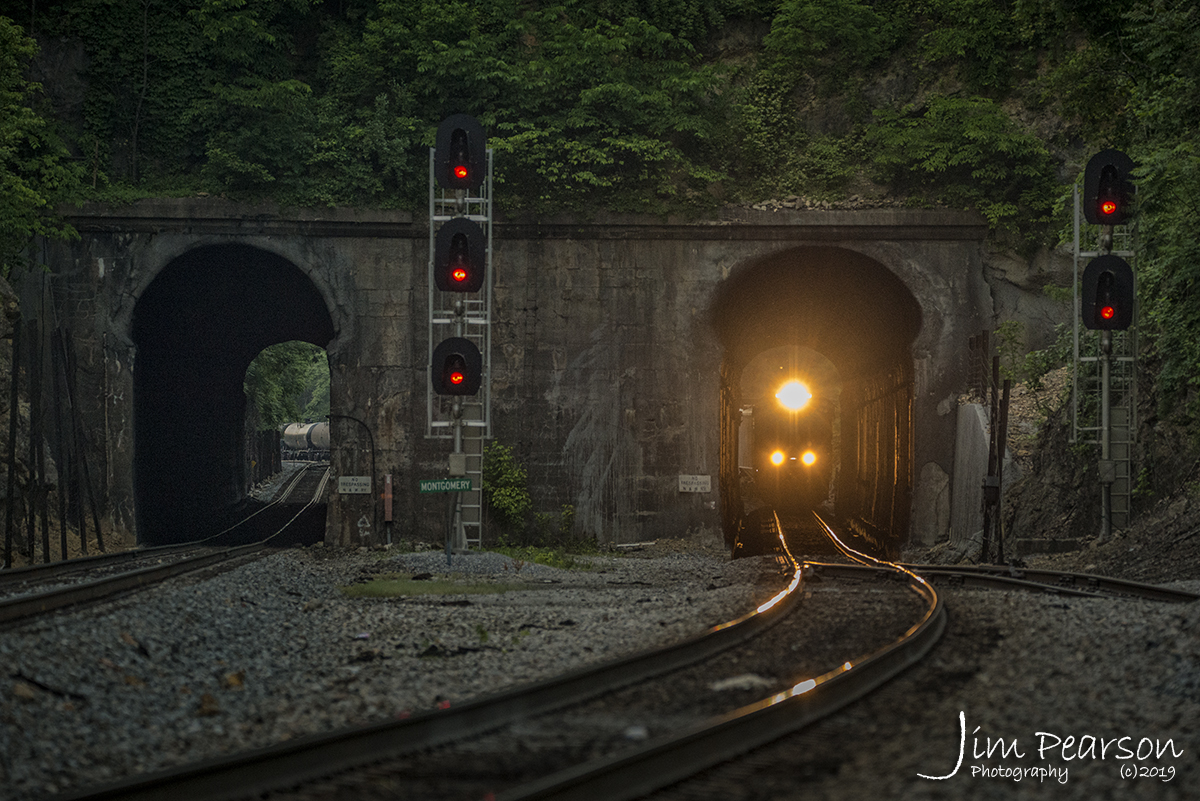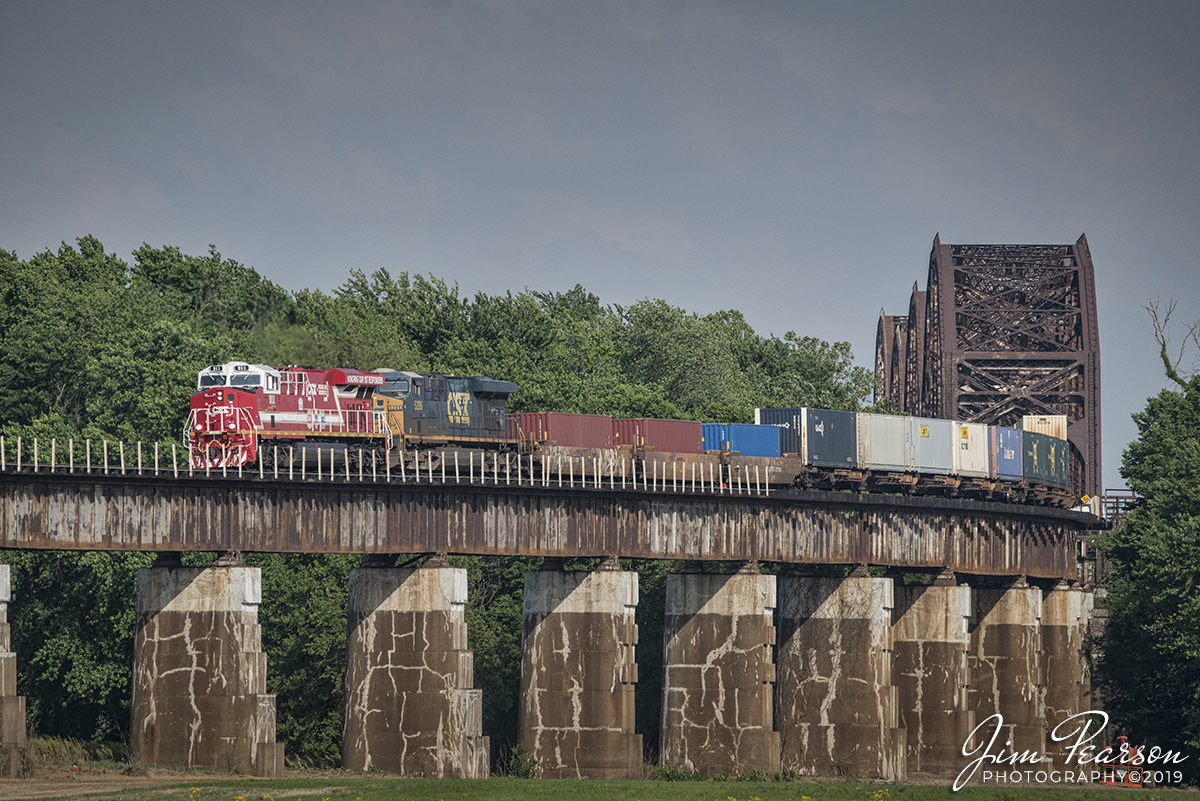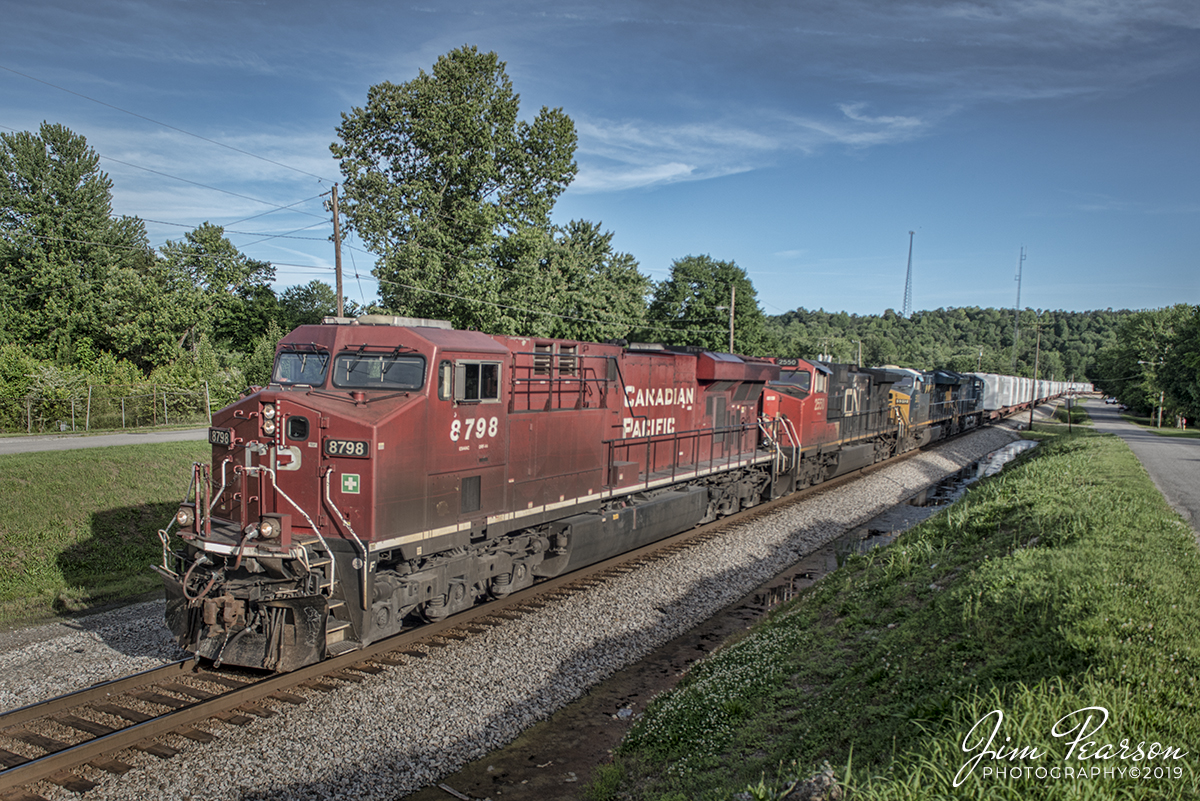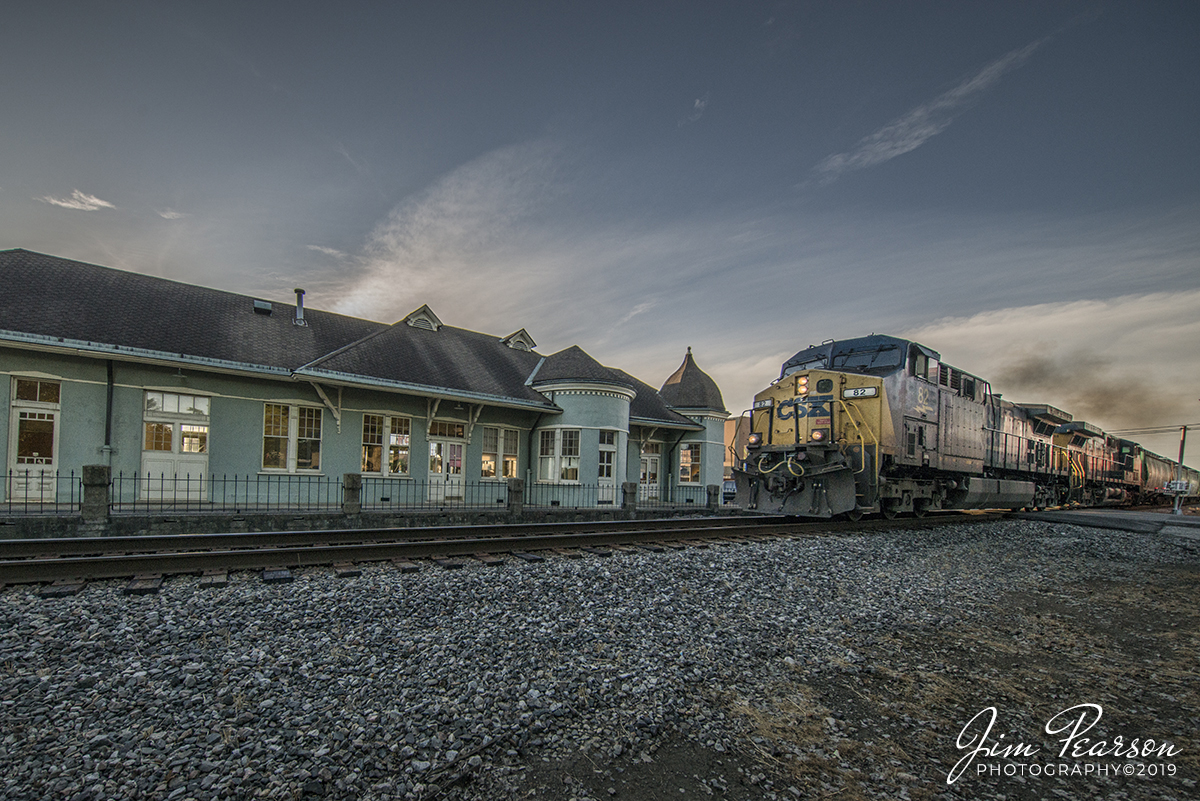March 26, 2019 – Crews work to get Cass Scenic Railroad Shays 4, 2, and 11, ready for a new day of work at Cass, West Virginia.
CSX Z901-03, a rerouted BNSF loaded coal train…
June 5, 2019 – CSX Z901-03, a rerouted BNSF loaded coal train due to flooding, snakes its way through the “S” curve, as it makes its way south on the Henderson Subdivision at Nortonville, Ky with BNSF 8526 in the lead.
Yeah, some days the timing is just off…
June 5, 2019 – Yeah, some days the timing is just off, like with this meet between J732 and Q025 just south of Oak Hill on the Henderson Subdivision at Nortonville, Ky. When it happens, you just move on because there’ll be another meet somewhere, sometime!
Norfolk Southern 9058 leads a loaded coil train…
June 4, 2019 – Norfolk Southern 9058 leads a loaded coil train westbound on the Louisville District at Lawrenceburg, Kentucky, bound for AK Steel at Rockport, Indiana.
CSXT 262 leads a northbound mixed freight…
May 25, 2019 – CSXT 262 leads a northbound mixed freight as it prepares to pass the Chesapeake & Ohio 5828 diesel on display at the C&O Museum in Clifton Forge, VA, on CSX’s Allegheny Subdivision.
Like trains, I enjoy photographing old barns…
May 27, 2019 – Like trains, I enjoy photographing old barns when I find them, such as these. However, I really enjoy it when I find something out of the ordinary to include with the barn such as this shot of the Green Bank Telescope just outside of Cass at Green Bank, West Virginia.
According to Wikipedia: The Robert C. Byrd Green Bank Telescope (GBT) in Green Bank, West Virginia, US is the world’s largest fully steerable radio telescope. The Green Bank site was part of the National Radio Astronomy Observatory (NRAO) until September 30, 2016. Since October 1, 2016, the telescope has been operated by the newly separated Green Bank Observatory. The telescope honors the name of the late Senator Robert C. Byrd who represented West Virginia and who pushed the funding of the telescope through Congress.
The Green Bank Telescope operates at meter to millimeter wavelengths. Its 100-meter diameter collecting area, unblocked aperture, and good surface accuracy provide superb sensitivity across the telescope’s full 0.1116 GHz operating range. The GBT is fully steerable, and 85% of the entire local celestial hemisphere is accessible. It is used for astronomy about 6500 hours every year, with 20003000 hours per year going to high-frequency science. Part of the scientific strength of the GBT is its flexibility and ease of use, allowing for rapid response to new scientific ideas. It is scheduled dynamically to match project needs to the available weather. The GBT is also readily reconfigured with new and experimental hardware. The high-sensitivity mapping capability of the GBT makes it a necessary complement to the Atacama Large Millimeter Array, the Expanded Very Large Array, the Very Long Baseline Array, and other high-angular resolution interferometers. Facilities of the Green Bank Observatory are also used for other scientific research, for many programs in education and public outreach, and for training students and teachers.
The telescope began regular science operations in 2001, making it one of the newest astronomical facilities of the US National Science Foundation. It was constructed following the collapse of a previous telescope at Green Bank, a 90.44 m paraboloid erected in 1962. The previous telescope collapsed on 15 November 1988 due to the sudden loss of a gusset plate in the box girder assembly, which was a key component for the structural integrity of the telescope.
Norfolk Southern 847 leads 22A west as it pulls through the Montgomery Tunnels…
May 25, 2019 – Norfolk Southern 847 leads 22A west as it pulls through the Montgomery Tunnels east of Christiansburg, Virginia. The Tunnel is a Twin bore tunnel near Christiansburg, VA and during the steam era O. Winston Link took several photos here of the Norfolk and Western Railway as part of his B&W night series. One such image was a wide angle version of NW 708; Train no. 3, westbound at Montgomery Tunnel. Mr. Has and his son, Dan were standing watching the train as it exited the tunnel at night.The tunnel was built in about 1890 and are currently on the NS Christiansburg District.
Found this neat old, haunted looking house…
May 27, 2019 – Found this neat old, haunted looking house, on the road after leaving the Cass Scenic Railroad bound for home. We actually drove past it and then turned around and went back to shoot it. It is located outside Dunmore, West Virginia. I’m sure in it’s day it was a magnificent place!
Canadian Pacific 8867 pulls CSX V752-26…
May 27, 2019 – Canadian Pacific 8867 pulls CSX V752-26 empty grain train westbound on the Kanawha Subdivision at Marmet, WV.
Canadian Pacific 8867 pulls CSX V752-26…
May 27, 2019 – Canadian Pacific 8867 pulls CSX V752-26 empty grain train westbound away from the Depot on the New River Subdivision at Thurmond, West Virginia. The line off to the right across the bridge is the RJ Corman West Virginia Line.
According to Wikipedia, Thurmond is a town in Fayette County, West Virginia, United States, on the New River. The population was five at the 2010 census. During the heyday of coal mining in the New River Gorge, Thurmond was a prosperous town with a number of businesses and facilities for the Chesapeake and Ohio Railway. The town was the filming location for John Sayles’ 1987 movie Matewan since it still possesses many of the characteristics of a 1920s Appalachian coal town.
Today, much of Thurmond is owned by the National Park Service for the New River Gorge National River. The C&O passenger railway depot in town was renovated in 1995 and now functions as a Park Service visitor center. The entire town is a designated historic district on the National Register of Historic Places.
A late westbound Norfolk Southern 217…
May 25, 2019 – A late westbound Norfolk Southern 217 heads west out of Roanoke, Virginia on the Christiansburg District, through the North Yard, as it passes a large string of NS locomotives. The units are being stored as part of precision scheduled railroading, being sold to short lines or other railroads although some are for rebuilds, which are mainly the standard cab SD70’s. The rest are probably destined for the scrap yard.
Cass Scenic Railroad Shays 4, 2, and 11, sit in the yard…
March 26, 2019 – Cass Scenic Railroad Shays 4, 2, and 11, sit in the yard after a day of work at Cass, West Virginia, as lighting lights the sky from an approaching storm. Only person working this late night shift is the hostler, William H Taylor, who will keep the fires and water in the engines up to speed for another day of work. Thanks Bill for all the help in getting our night shots!!
Crews work to get Cass Scenic Railroad Shays 4, 2, and 11…
March 26, 2019 – Crews work to get Cass Scenic Railroad Shays 4, 2, and 11, ready for a new day of work at Cass, West Virginia.
A waterfall between Thurmond and Harvey, West Virginia…
May 27, 2019 – A waterfall between Thurmond and Harvey, West Virginia provides this scenic view along the RJ Corman line. Unfortunately there were no trains running while I was there, but a beautiful view nonetheless!
CSXT 169 leads a loaded coal train eastbound at Thurmond, West Virginia…
May 27, 2019 – CSXT 169 leads a loaded coal train eastbound at Thurmond, West Virginia as a empty westbound coal waits in the siding. The line off across the bridge in front of 169 is the RJ Corman.
According to Wikipedia, Thurmond is a town in Fayette County, West Virginia, United States, on the New River. The population was five at the 2010 census. During the heyday of coal mining in the New River Gorge, Thurmond was a prosperous town with a number of businesses and facilities for the Chesapeake and Ohio Railway. The town was the filming location for John Sayles’ 1987 movie Matewan since it still possesses many of the characteristics of a 1920s Appalachian coal town.
Today, much of Thurmond is owned by the National Park Service for the New River Gorge National River. The C&O passenger railway depot in town was renovated in 1995 and now functions as a Park Service visitor center. The entire town is a designated historic district on the National Register of Historic Places.
Well, after a three day whirlwind trip…
May 28, 2019 – Well, after a three day whirlwind trip with fellow railfan Ryan Scott, of IndianaRails, to Tennessee, Virgina, West Virginia and Kentucky we both got back home last night. A big shout out to all the folks that helped us out along the way, especially Daniel Alls, Walter Scriptunas II, Jul Esp, Bryan Burton, Gavin Wilkes and all the others that responded to our posts for questions and help in the different areas we visited! Without your help and input the trip would have been a lot less successful! Got a lot of pictures to work through and many posts yet to come from this 4 day trip!
According to Wikipedia: Shay #11 was built in 1923 and went originally to Hutchinson Lumber Company, Feather Falls, California. This Shay is best known as the Feather River #3 and it’s also a class C shay, #11, weighs 103-tons. It began service at Cass in 1999.
This morning’s image was shot the night of May 26th after a spring storm made its way through the Cass Scenic Railroad area and is of Shay #11 at rest in the yard after a days work at Cass, West Virginia. Shooting at night and in the rain can be challenging, but probably the hardest part is getting out the door!
My kit bag for this type of shooting is a golf umbrella and a large microfiber cloth to dry off the camera and lens with when drops make it past the umbrella! Of course a good sturdy tripod is a must as well. I typically set the camera on manual and adjust for the specific scene, with the camera controls set to a 3 second delay before the shutter is tripped. This raises the mirror and lets things settle before taking the photo. ISO and length of exposure all depend on the lighting, but they’re set manually as well. This particular shots technical details are: Nikon D800, Sigma 24-70 lens @ 26mm, ISO 1000 (full frame cameras are great) f/8 for 30 seconds in RAW.
Cass Scenic Railroad’s #2 Shay engine…
May 26, 2019 – Cass Scenic Railroad’s #2 Shay engine pushes hard as it moves a load of passengers up the mountain to Whittaker after passing through the grade crossing on Gum Road at Cass, West Virginia.
The Cass Scenic Railroad is Geared Steam, USA, boasting the largest collection of operating geared steam locomotives in the world. The railroad was originally part of West Virginia Pulp & Paper’s (later Mower Lumber Company) massive timber operations centered within the small community of Cass, West Virginia, situated deep within the Appalachian Mountains
Shay No. 2 — (Mayo Lumber No. 4) – 1928; Pacific Coast Class (PC-13). Shay No. 2 was reportedly the only Pacific Coast Shay ever built as a wood-burner. The locomotive was converted to oil firing before delivery new to Mayo Lumber Co., Paldi (Vancouver Island) British Columbia as No. 4. Cass Scenic Railroad
Norfolk Southern 7338 leads 65W west…
May 24, 2019 – Norfolk Southern 7338 leads 65W west as it pulls through the Montgomery Tunnels east of Christiansburg, Virginia on the NS Christiansburg District.
CSXT 911, the new CSX locomotive Honoring our 1st Responders…
May 18, 2019 – CSXT 911, the new CSX locomotive Honoring our 1st Responders, heads up intermodal Q026 with CSXT 5286 trailing as it makes its down the viaduct after crossing the Ohio River Bridge at Rahm, Indiana as it heads north on the Henderson Subdivision.
CSX W990-12, with Canadian Pacific 8798…
May 20, 2019 – CSX W990-12, with Canadian Pacific 8798, Canadian National 2550, CSXT 5312 and 3442 leading the way approaches Mortons Junction on the Henderson Subdivision at Mortons Gap, Ky as it heads north with a load of windmill motors and a long string of grain hoppers on the end of it’s train.
CSXT 82 leads Q501 as it passes the old L&N Depot…
May 20, 2019 – CSXT 82 leads Q501 as it passes the old L&N Depot at Hopkinsville, Ky as it heads south on the Henderson Subdivision at sunset. This depot has developed structural issues in the last year and is currently sitting empty because of it.
According to the city of Hopkinsville an estimate for repairs are over $900,000 and with today’s tariffs that price will probably go up. Unfortunately the city doesn’t even have a tenant that wants to occupy the station.
The West Ky Chapter of the NRHS group has made some suggestions for uses and they are going to look into them along with some possible grants for the repairs, but at this point it doesn’t look real good. The building has started sinking in from the area where the turrets are located and on the west side of the building toward the middle of the structure. If you know someone willing to help save this station have them contact the city of Hopkinsville, Ky.


